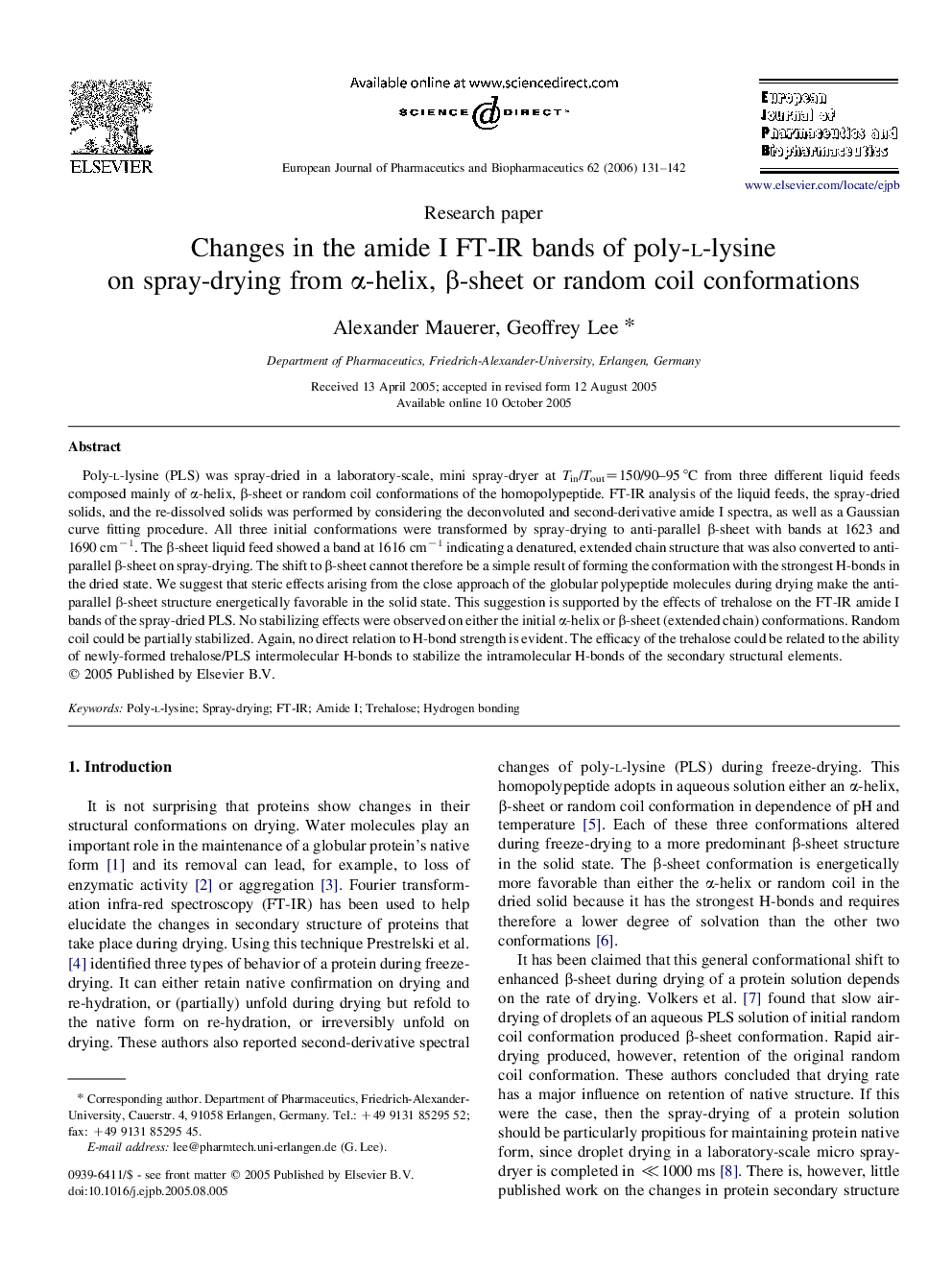| کد مقاله | کد نشریه | سال انتشار | مقاله انگلیسی | نسخه تمام متن |
|---|---|---|---|---|
| 2085265 | 1545417 | 2006 | 12 صفحه PDF | دانلود رایگان |

Poly-l-lysine (PLS) was spray-dried in a laboratory-scale, mini spray-dryer at Tin/Tout=150/90–95 °C from three different liquid feeds composed mainly of α-helix, β-sheet or random coil conformations of the homopolypeptide. FT-IR analysis of the liquid feeds, the spray-dried solids, and the re-dissolved solids was performed by considering the deconvoluted and second-derivative amide I spectra, as well as a Gaussian curve fitting procedure. All three initial conformations were transformed by spray-drying to anti-parallel β-sheet with bands at 1623 and 1690 cm−1. The β-sheet liquid feed showed a band at 1616 cm−1 indicating a denatured, extended chain structure that was also converted to anti-parallel β-sheet on spray-drying. The shift to β-sheet cannot therefore be a simple result of forming the conformation with the strongest H-bonds in the dried state. We suggest that steric effects arising from the close approach of the globular polypeptide molecules during drying make the anti-parallel β-sheet structure energetically favorable in the solid state. This suggestion is supported by the effects of trehalose on the FT-IR amide I bands of the spray-dried PLS. No stabilizing effects were observed on either the initial α-helix or β-sheet (extended chain) conformations. Random coil could be partially stabilized. Again, no direct relation to H-bond strength is evident. The efficacy of the trehalose could be related to the ability of newly-formed trehalose/PLS intermolecular H-bonds to stabilize the intramolecular H-bonds of the secondary structural elements.
Journal: European Journal of Pharmaceutics and Biopharmaceutics - Volume 62, Issue 2, February 2006, Pages 131–142